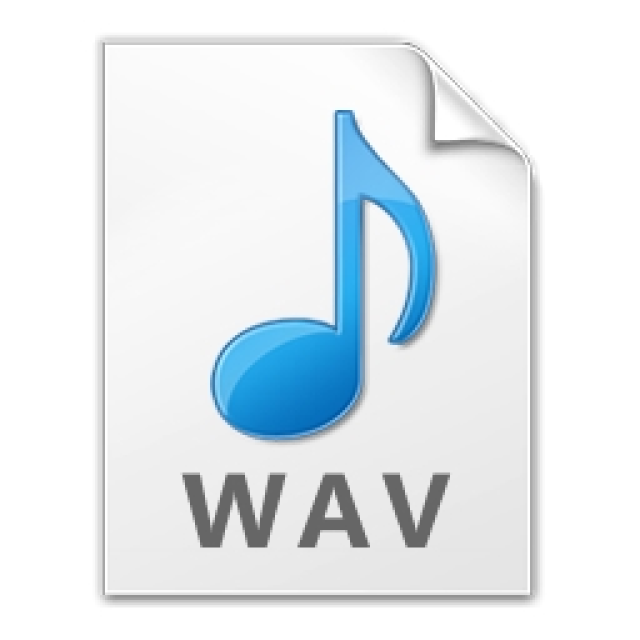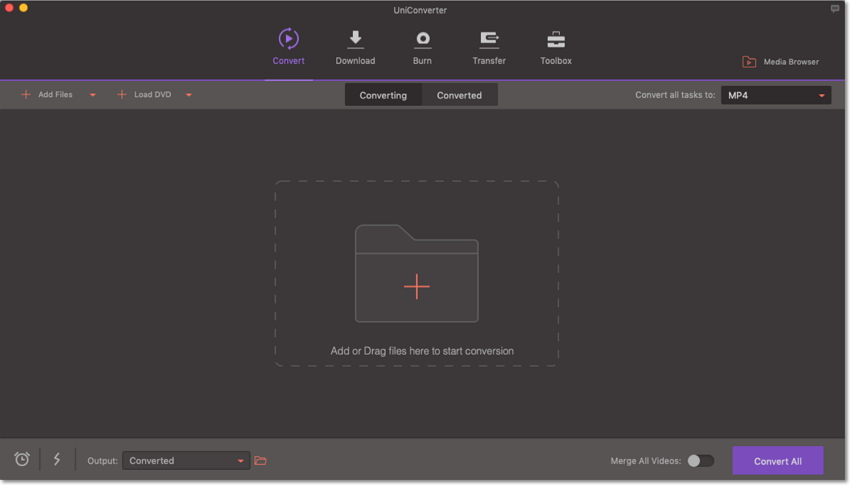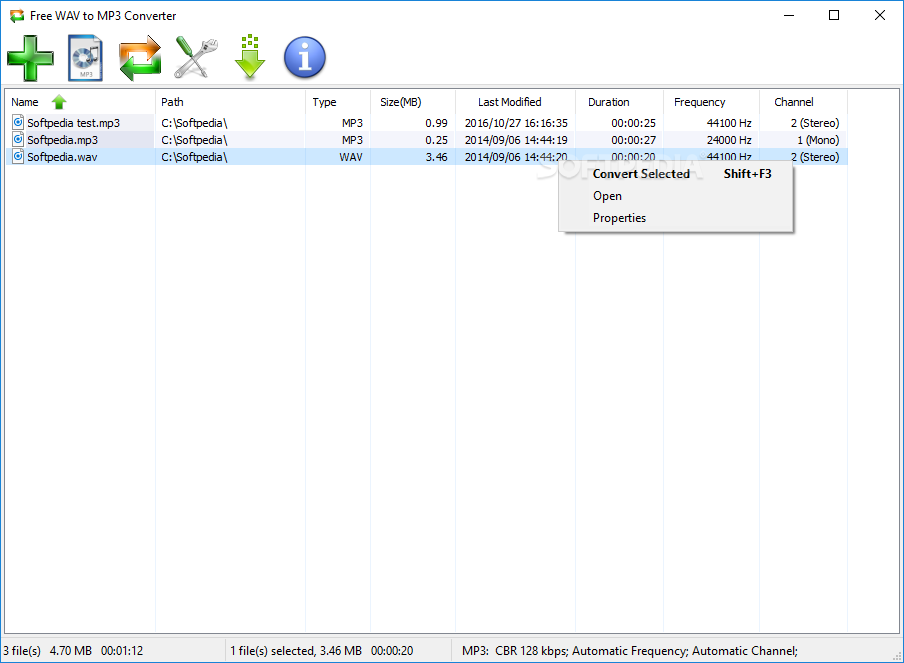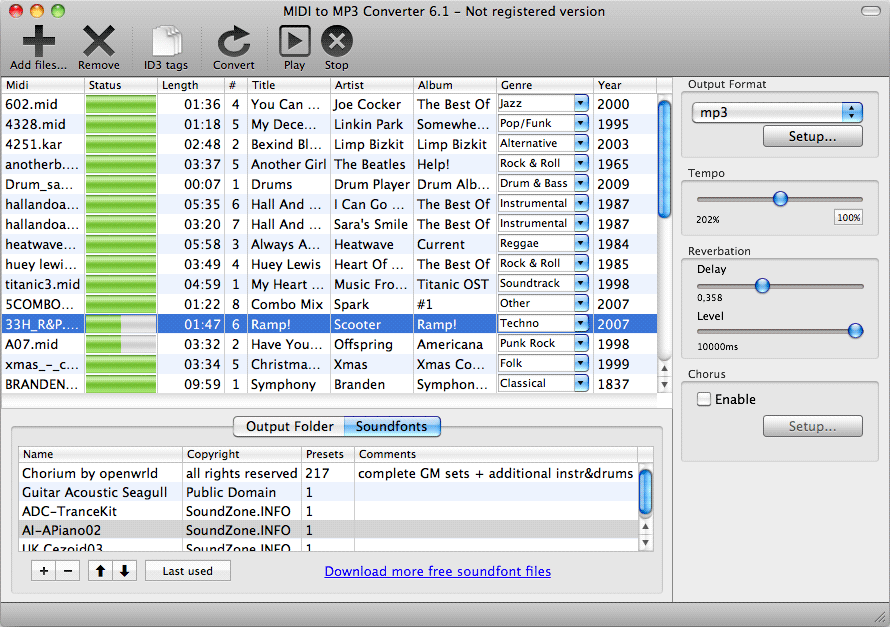Convert audio files to any popular format fast. WAV, MP3, WMA, M4A, OGG, MID, FLAC, AMR, AAC, AU, AIFF, RAW, DVF, VOX, DSS and many other audio formats. Switch is one of the most stable, easy-to-use, and comprehensive multi format audio file converters available. And many other audio formats. Step 1: Add WAV files to the program. Run UniConverter on Mac by double-clicking on the application’s icon. From there, you can select the WAV file from your computer and drag and drop it to the primary window. The other way to add the WAV file is by clicking the 'Add Files' option.
When it comes to the question of how to remix the music, the first step is to combine audio files. When you have a call for joining separate music tracks together and make it your own music video, to combine audio files will be your first move. Or you may have more needs for the audio files merging. So here, we will talk about 5 easy ways to combine audio files on the desktop. Now, Let's dive in.
How to Combine Audio Files on Windows
If you are Windows users and have quantities of audio files scattered in your Windows 10 local disk, it'd be better for you to pick up some of those separate audio files and join them into one single file. After merged, multiple music tracks can then be remixed by overlapping or adding some sound effects to them. First thing first, how do I combine audio files in Windows 10? In the following, we provide you 3 audio mergers.
1. Combine Different Formatted Audio Files in VideoProc

OS: Windows, Mac
The first audio merger we are using is VideoProc, which is a piece of versatile video processing software exceeding in providing all-round solutions for video editors. No matter what file extension of your audio files have, namely .mp3, .wav, .ogg, .aac, .flac, etc. or whether it is an M4A file or be it an M4R exerted from a song, you can throw all of your audio files contained in different types and VideoProc can handle them well. There's no need worrying about the import failure caused by the unsupported file formats.

VideoProc - the Handy Audio Merger
- Easy and handy to use.
- One-click merge feature.
- Different formatted audio tracks can be added freely in VideoProc.
- Combined audio files can be exported to popular formats eg. MP3, AAC, OGG, FLAC, WAV, M4A, M4R, and many more...
After you've got VideoProc installed on your Windows or Mac computers, fire it up on your windows desktop, then follow 3 simple steps below:
Step 1: Click on Video to enter its video processing interface.
Step 2: Import several audio files in VideoProc: you are allowed to add as many audio files contained in different formats as you wish in VideoProc.
Step 3: Choose an output format for the audio and export the merged audio files to the local: hit the RUN button in the bottom corner of the right interface.
A Warm-Note
The output format you choose for the final export will be the container format of all merged audio clips. If you want to change the format, you can import the audio file you just merged in VideoProc, and pick up your desired format eg. MP3, WAV, AAC, FLAC, OGG, just name a few, under its music tab.
2. Combine MP3 Files in Audacity
Audacity is an open source and cross platform audio editor. The latest version 2.4.1 can be run on Windows 10. It supports for WAV (*.wav), AIFF (*.aiff), MP3 (*.mp3), and OGG (*.ogg) audio files. The tool made to combine audio files is called Time Shift Tool, which can be tuned for multi-tracks. By pressing the Time Shift Tool, you can drag the waveform of the clip forward or backward until it satisfies your ears.
Step 1. Download the latest version of Audacity on your Windows 10 computer.
Step 2. Launch & import audio in Audacity: File >Import, pick up audio files from the local file folder.
Notice: There are audio formats unable to be input in Audacity, and you can do nothing with that but to click on OK. Have some audio files other than MP3? You can combine different formatted audio files.
Step 3. Click on Time Shift Tool (with the double-headed arrow), or you can press the keyboard hotkey F5 > drag the Time Shift Tool cursor to the position where you want your second clip to be played after the end of the first clip.
Step 4. Export the audio file: File > Export > choose Export as WAV in the drop-down list.
 Things Worth to Note
Things Worth to Note- If you want each clip be played in full track, you may drag the cursor of one clip either to the beginning or the end of the other clip. A yellow line will appear when you reach the head or the bottom of the waveform, which is to help you locate the position in a trouble-free manner.
- If you use the Time Shift Tool to put one audio track within the waveform of the other track, then it'll be another story: two soundtracks will be played at the same time. By adjusting the volume of one track, there will be a mixing effect after the export.
- The bad news is, however, you are not allowed to listen to the audio files you just combined in Audacity before exporting.
3. Merge MP3 Files with VLC
VLC is an open-source free program that you can free access to. Based on its introduction of how to merge videos, we have tested its capability of combining audio files, and it turns out to be feasible as well. Before we kick off, you need to make sure that all of your audio files have the file extension of .mp3. Otherwise, this method may not work for you. (Notice: if you have different formatted audio files such as .flac and .mp3, see the workaround.)
Step 1. Download and install VLC (32 bit) (64 bit) on your computer.
You are recommended to install VLC locally by its default route.
Step 2. Use the keyboard shortcuts Win+X > click Command Prompt in the pop-up list. Or, you can use the hotkey combination Win+R to open Run > type cmd in the box > hit Enter, then the Command Prompt will be opened as well.
Step 3. In the Command Prompt, enter the command: cd c:mp3, then hit the Enter key.
Sidenote: The c:mp3 command is the file folder directory where your mp3 audio files are kept. If your audio files are kept in C disk, but not with a file folder, you need to enter c:
Step 4: There will be c:mp3> command already exists, copy and paste commands as follows:
'C:PROGRAMFILESVideoLANVLCvlc.exe' -vv 1.mp3 2.mp3 --sout-keep --sout=#gather:transcode{acodec=mp3,ab=128}:standard{access=file,mux=dummy,dst=combinedout.mp3}
Sidenotes:
1. The C:PROGRAMFILESVideoLANVLCvlc.exe command refers to the directory path where the VLC launching program is located in your windows computer, which is also the default path of VLC setup. Change it if you've set a different destination path for your VLC installation.
2. The 1.mp3 2.mp3 command refers to the filename of your audio tracks. Customize the part based on your personal demands.
3. The combinedout.mp3 command refers to the file name of the combined file. You can change it to the one you like.
As you can tell, to combine audio tracks in VLC is a manual-process intensive and back-breaking work. You need to make sure that each command is flawlessly followed by one another. Otherwise, one step wrong, you need to start from scratch. If you are not familiar with computer codes, chances are that you have trouble in going through all those commands successfully. Another thing worth mentioning, it may not be friendly to users who need to combine dozens of audio files saved in different names at one time. You may have to manually enter the command for each audio file, and one code wrong, the failure is doomed.
How to Combine Audio Files on Mac
For Mac users, you can combine audio files either in iTunes or in iMovie, both of which are free to get from Apple App Store. Now, let's get right into it.

1. Join Selected Audio Files in iTunes
Step 1. Launch iTunes on your Mac.
Step 2. Select your audio files to merge. (Keyboard hotkeys Ctrl + Shift and click on the your favored songs.)
Step 3. Right-click on each song > choose Get Info in the drop-down list > choose the Options tab > check Part of a compilation and Gapless album boxes > click on the OK button.
iTunes also supports combining music tracks importing from CD:
Step 1. Insert an CD and open iTunes on your Mac.
Step 2. Select all audio files to be combined, or you can click Edit in the browser > Select All.
Step 3. Choose Join CD Tracks, and click the Import CD button to combine selected tracks into one.
2. Merge Audio Files in iMovie
iMovie is another go-to tool on Mac. Besides combining audio tracks, you can then add the combined music to video in iMovie.
Step 1. Open up the Mac App Store to update or download the latest iMovie for your Mac.
Step 2. Drag and drop multiple audio files to iMovie, adjust the audio length a little bit and reorder the clip if needed.
Step 3. Click the export button on the top right corner of the interface > choose File.
Step 4. Choose Audio Only under Format and pick up your desired file format (MP3, AAC, AIFF, WAV) for the export.
FAQs on Combine Audio Files
How do I combine audio files online?
You can use online audio merger such as Clideo to combine multiple audio files and join them into one. Although being convenient to use, there are many drawbacks: the limitation on the file size and the file import.
Can I combine audio files in QuickTime?
Unluckily, you can only add music to video in QuickTime. In other words, a slice of video track is required in QuickTime, and all separate music tracks you've added for that video will be merged into one, making it a background music for your video.
How Do I Play A Wav File On My Mac
How to join two mp3 files with Windows Command Prompt?
To combine audio files with Windows Command Prompt, you need to do as follows:
Mac Os Audio Editor
- Use the hotkey [Win+X] to open the menu > choose Command Prompt in the pop-up window.
- After the new window pops up, enter cd c: followed by the directory. This is to open the the file folder where your audio files are saved, and you may need to change the command to match with the actual file folder path of your audio files.
- Enter the command copy /b *.mp3 c:combined.mp3 > press Enter. This is to copy the audio files that have the file extension of *.mp3 under the file folder you've entered, and you can change the output name for your combined audio file as you wish. (The command for the output is: combined.mp3.)
- Then you can find the combined audio file named by combined.mp3 in the local C: disk.
How To Download Wav Files On Mac Free
Concluding Remarks

How To Download Wav Files On Mac Os
Till now, we've walked around you 5 ways to combine audio files on both Windows and Mac. If you are with Windows OS, you can download VideoProc, Audacity, and VLC on the computer and combine audio files in any of that. For Mac users, iMovie can suit your needs. After we place full analysis on the performance of the 5 video editing software, we safely conclude that VideoProc, with its intuitive interface, diversified audio formats import & export, and well support for both Windows and Mac operating systems, can be your best bet.